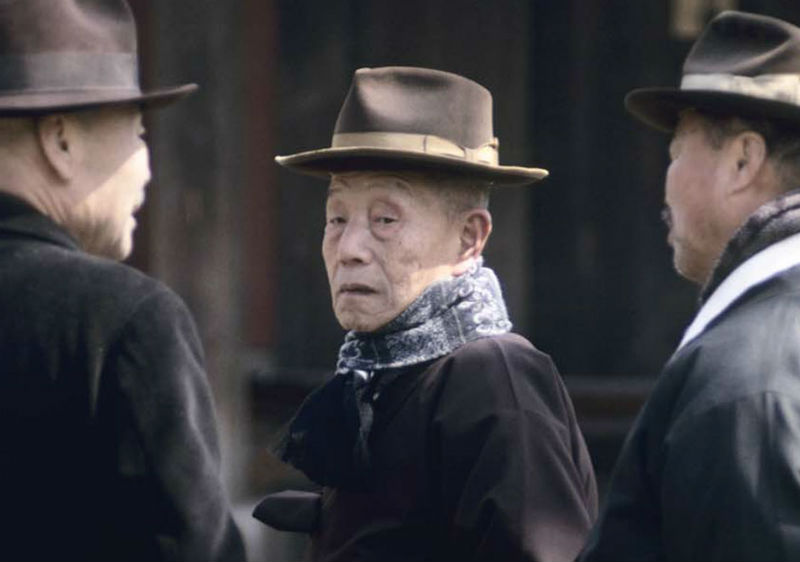Margaret Condon Taylor's photographs capture a lost Seoul

Margaret Condon Taylor is not a typical photographer. The University of Michigan alumna gained a Ph.D. in psychology, which she currently still practices. So, in the spirit of Taylor's day job, the viewer may feel the need to ask probing questions about the photographs on display in An Accidental Photographer: Seoul 1969 at U-M's Institute for the Humanities Osterman Common Room, such as: What do they tell us? And why is the project “accidental”?
Although the title of the exhibition raises questions, one does not need to look far for answers.
In 1969, Taylor worked for the Peace Corps as a volunteer. Her resulting photographic collection, on display now for the first time in almost 50 years, documented the ever-changing scenes of ordinary life in South Korea in a “rapidly modernizing society.” These photographs, taken in the style of street photography, unknowingly captured the city and its people at a time in which both people’s ideas and surrounding landscape would irrevocably shift. Some subjects were photographed unaware that they were being captured by an American photographer, though others, as the exhibition text suggests, “acknowledge[d] the presence of their blue-eyed neighbor with quiet bemusement, curiosity, and dignity.” Taylor succeeded in “creat[ing] powerful portraits of the city that no longer exists.”
Stationed behind the Ewha Women’s University, Taylor was in a position to observe and document the Korean community. Throughout her time there, Taylor “caught intimate and ephemeral moments in a changing world.” To what exactly does this “changing world” refer? The exhibition’s wall text suggests there were multiple factors contributing to the seismic changes in Seoul. First, these changes were largely due to a rapidly increasing population, which had quadrupled between 1960 and 1980. With population growth, the area also experienced accelerated industrialization. As the Humanities department tells us, the town was “organized around alleyways” at the time Taylor was stationed in Seoul. Her photographs do not show us the future Seoul, which would be comprised of skyscrapers and industrialized buildings.
The selections in the gallery were chosen from a pool of over 300 photographs, selected with the help of Youngju Ryu, associate professor of Asian languages and cultures, and Professor David Chung from the Penny W. Stamps School of Art & Design. The photographs are unretouched and uncropped, taken on Ektachrome transparency film and “composed ‘in camera.’” This may seem like an inconsequential detail, but the idea of a photographed composed entirely “in camera” was not as easy as it is today. Photographers could not see an instant result on their cameras, nor could they alter their composition based on previous images as they worked.
In other words, the photographer had only the viewfinder.
Throughout photographic history, almost all photographs were expected to be cropped, dodged, or burned to some degree, once the film was developed and analyzed. Today, photographic techniques still almost always involve some sort of editing despite changes in the way they are made. The very machines by which we most commonly capture images suggest that the image will be made better through digital alteration.
As the modest but compelling An Accidental Photographer: Seoul 1969 shows, that's not always the case.
Elizabeth Smith is an AADL staff member and is interested in art history and visual culture.
"An Accidental Photographer" runs through Jan. 12 at U-M's Institute for the Humanities Osterman Common Room, 202 S. Thayer St., Ann Arbor. Free. Visit lsa.umich.edu for gallery hours and more information.


































